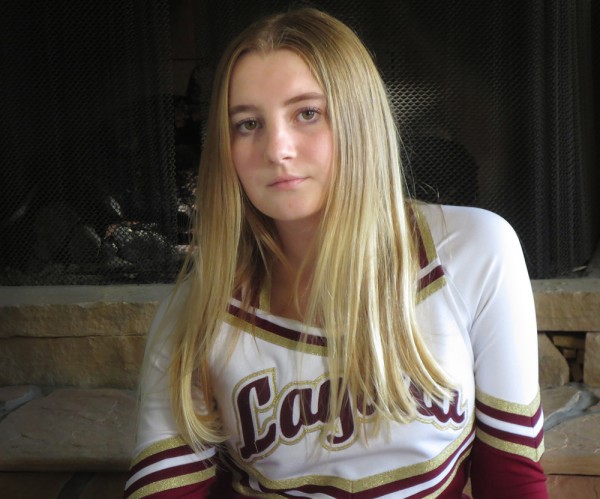By Marilynn Young | LB Indy
Laguna Beach High school cheerleader Katie Radabaugh, 14, trains knowing the cardinal rule, “never drop the flyer.” So when her grasp slipped during a lift before last October’s homecoming performance, Katie collapsed to the ground to break her teammate’s fall and hit her head hard.
Though Katie says she “doesn’t remember exactly what happened,” she knows the school’s recently updated Concussion Management Guidelines, to ensure brain-injured students receive proper care, went into effect.
At Mission Hospital in Mission Viejo, she underwent neurological tests that determined the blow caused a concussion. As a result, she complied with the district’s guidelines for brain injury recovery: staying at home with no mental exertion. Off limits: homework, television, computers, texting and video games.
Her headache lasted several days. Only after getting a release from a doctor who specializes in concussions was Katie allowed to return to school and resume cheerleading and academics in progressive steps.

Katie is one of 17 students injured so far this school year while participating in a school related activity or sport, says a statement. Another five children sustained injuries outside of school. The increase in concussion injuries over the past two years prompted the initial need for formal protocols, according to a March 8 statement. Two-thirds of LBHS students participate in sports.
The district’s policies meet the requirements for concussion management in state education code, which became effective Jan. 1, 2015.
The state law enacted in 2011 comes in the wake of emerging scientific evidence suggesting that repetitive brain injuries lead to chronic traumatic encephalopathy, (CTE) a brain disease diagnosed among professional athletes who have suffered numerous concussions. A National Football League official testifying before Congress last month acknowledged for the first time a link between football and brain disease.
“Concussions are complicated due to the fact that students heal at different rates,” said Irene White, the district’s director of special education and student services. “It is imperative that as educators we work closely with the student, parent and licensed MD or DO to monitor and respond to symptoms.”
The district’s guidelines stress total rest, meaning not taxing the brain with physical or cognitive demands. Students are not expected to complete schoolwork while at home.
Parents of students who have suffered a brain injury can request a personalized care plan, says a district statement, citing more information on teacher, coach and counselor responsibilities on the district website.
Even with the guidelines, some parents worry about exposing their children to the risk of participating in sports and whether the post-injury protections are adequate.
Eva Johnson, 17, quit soccer and took up competitive rowing at the Newport Aquatic Center after suffering a severe concussion playing for LBHS when she was 15, said her mother, Stacy Collins Johnson.
“She had bad headaches everyday for months. It’s a big reason she is not on the soccer team. It scared her and she really loved playing. The frustrating part was it aggravated her schoolwork. She had to let her brain rest. She was not aware at that time how much concussions could affect her academics. It was a tough year,” said the mother.
Dr. Christopher Giza, who directs the NFL Neurological Care Program at UCLA, pointed out that the young brain is continuously evolving. “If it gets damaged and is not allowed to recover, that development is going to go off the tracks,” Giza, director of UCLA’s Brainsport program, said on the campus website.
Another local parent, Kay Metis, mother of 12-year-old Mael, a Thurston Middle School student, supports her son’s love for sports, with the exception of football. “I worked with Navy Seals in San Diego and I know about traumatic brain injury. I applaud the school district for being proactive on informing teachers, coaches and parents on concussions.”
The bigger hurdle may be instilling that message among young athletes. Katie, the injured cheerleader, says in cheer culture, concussions are not unexpected. “You do it at your risk and the support of the team,” she said. “If you love it enough you’re going to go back.”
The renewed focus on concussion prevention and intervention has school officials urging student athletes to take another step. Schools already require mandatory physical exams before the start of a season. In September 2013, an LBHS football booster group also helped organize baseline brain tests. The tests are re-administered in the event of a concussion and yield a comparative pre- and post-injury score.
Computerized assessments measure reaction time, memory capacity, speed of mental processing, and executive functioning of the brain, according to ImPACT, a Pittsburgh developer of concussion evaluation tools.
As parents learn of the new guidelines, some like Eva Radabaugh, the daughter of the injured cheerleader, came away less fearful about their children participating in school activities because they are more confident any head injuries will be taken seriously. “They were really great at explaining what to look out for,” she said.




